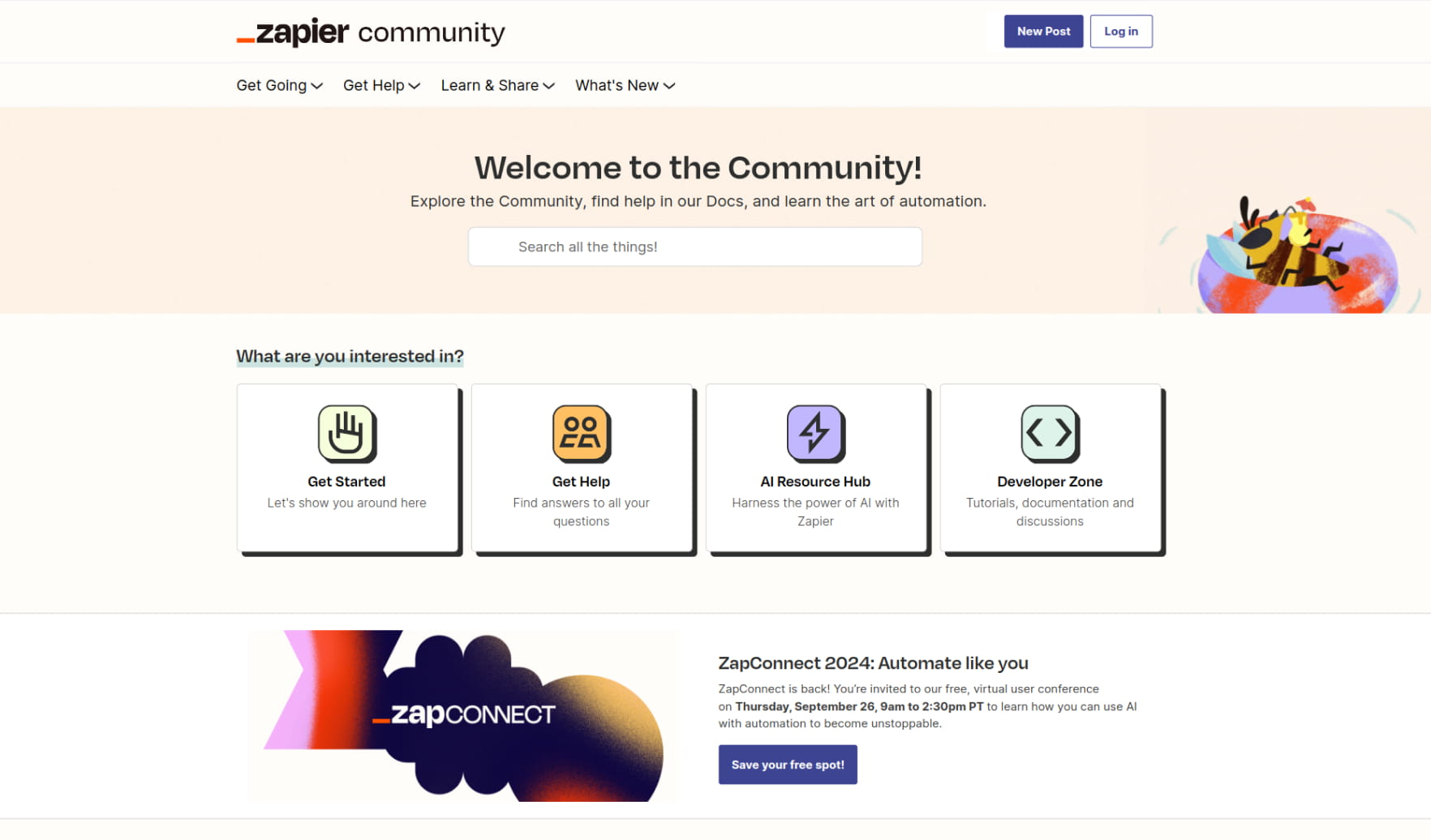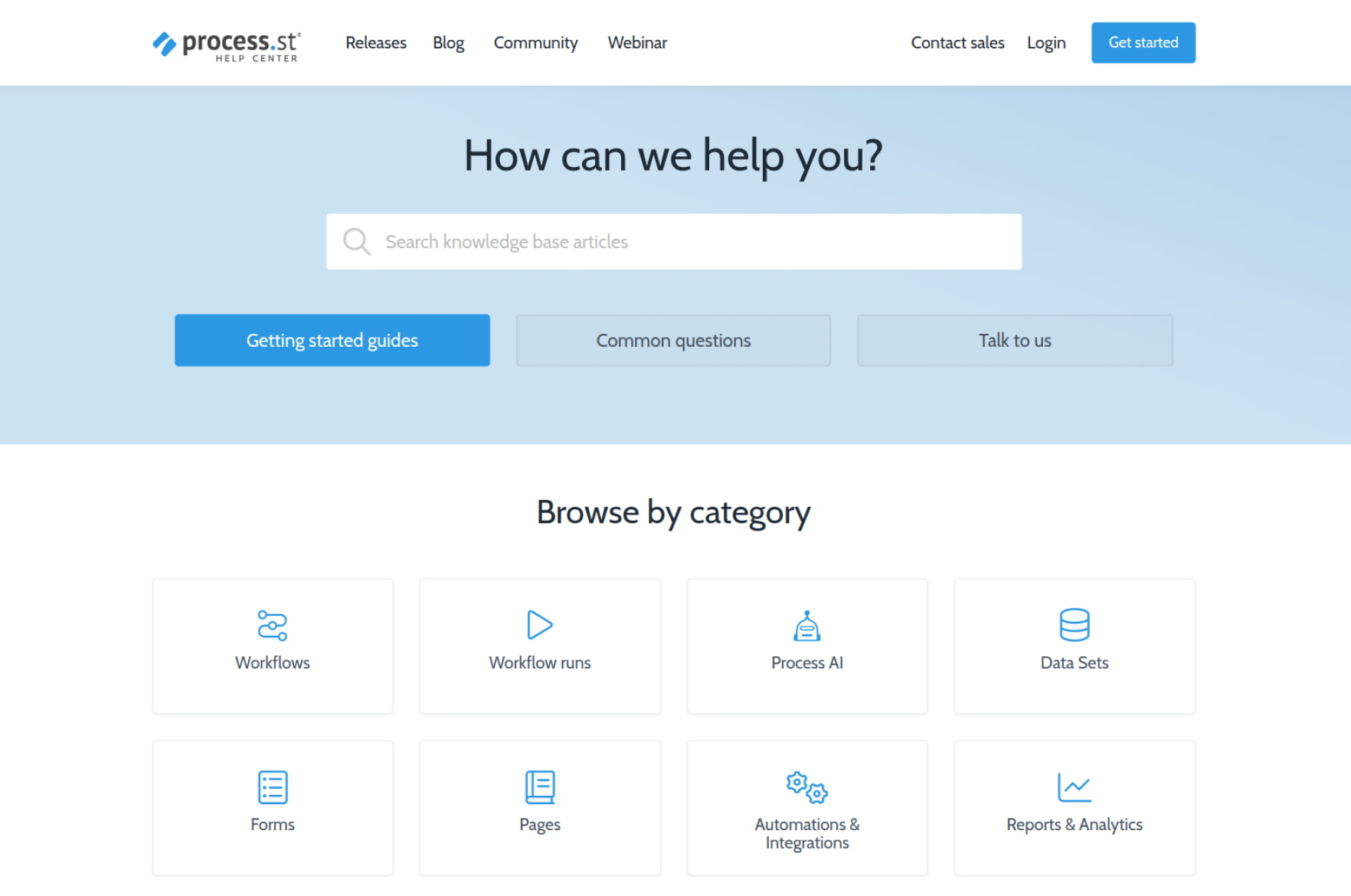Ever have that sinking feeling when a major customer contacts you with a problem, and your support team takes ages to find a solution? It’s a nightmare, right? What if the customer abandons your software after that? In a fast-paced world, stellar SaaS customer support can make the difference between a loyal customer and one who turns to a competitor.
Imagine flipping the script. Instead of dreading customer support nightmares, you can turn every support interaction into a chance to impress your clients and build lasting relationships. This article is your go-to guide for transforming your company’s SaaS customer service from poor, ok, or good, to unforgettable. We’ll explore the essential components and best practices for a successful customer support strategy, and take a look at a few examples of SaaS companies that provide excellent support.
Ready to keep your customers coming back? Let’s get into it and learn why support is especially important for SaaS companies, compared to non-SaaS companies.
Importance of providing excellent customer support for SaaS company success
At first glance, customer support in SaaS companies is no different from customer support for any other business type. But look a bit closer and you'll see unique challenges SaaS companies face that necessitate taking a more strategic approach to customer support operations.
SaaS customers require 24/7 availability
In non-SaaS businesses, round-the-clock access to support agents is a great addition, but not essential. In most cases, nothing critical happens if customers of a provider of on-premise software can’t get help immediately. The same applies to non-tech companies, like retailers.
However, SaaS products are cloud-based, meaning problems can impact all customers simultaneously. That is, if one customer files a complaint, the others might experience the same. Without 24/7 customer support, these issues may be fixed too late, leading to significant financial losses. Your clients will turn to a competitor’s software, and your customer retention rate will drop.
SaaS customers require proactive, continuous support
Customers of non-SaaS companies typically don’t need to contact support frequently. They might seek assistance to clarify details before making a purchase or to address issues with the product or service, but these interactions are generally limited.
In contrast, SaaS users require ongoing support. They need assistance during the onboarding process, after each update, let alone various issues that arise during regular use. For example, if your customer support team fails to assist customers after a major update, your client may decide the software is too complicated or they might not be able to find essential features. They may turn to other solutions, causing your product retention rate to drop.
SaaS company sales depend on subscriptions
Non-SaaS profit from occasional purchases, like a pair of sneakers, or a washing machine. But SaaS companies depend on subscription-based revenue generation. That is, billing inquiries, subscription changes, renewals, and cancellations add another layer of complexity to their support operations. Issues related to billing can be sensitive and require careful handling.
If a client cancels their subscription, your company loses more profit than many product companies, where users make intermittent purchases like, for example, sneakers. In comparison, when a SaaS company loses a client, it loses a repeating monthly flow of revenue.
As you can see, without quality customer support, your clients might miss the actual value of your software, or be so disappointed in your service that they abandon your product. This means that even if your company has the best software on the market, you’ll reduce the lifetime value of your customers.
That’s why customer support for SaaS companies is so crucial and why you’d better make sure yours is top-notch. Learn how to create an effective customer support strategy in the next section.
Components of an effective SaaS support strategy
The support strategy of different SaaS companies varies in the details, but they’re all similar in the grand scheme of things. You can’t build a strategy without the following components.
SaaS customer service model
The first thing you need to establish for effective customer support in your SaaS company is a support model.
Customer support models can be classified based on different aspects of support, from the main channel of communication (email-based, phone-based, self-service, omnichannel, etc.) to the type of interaction you have with customers (in-depth personalized, one-on-one, etc.). You can choose and define your model based on one of these classifications.
But no matter what you call it, base your SaaS customer service model on your target audience’s needs. For example, what if your SaaS company provides AI email-writing software and your target audience is composed of companies of different sizes in various industries? The best model in this case may be an omnichannel model with a self-service option. This way, you can meet the various needs of your audience by allowing them to fix common issues themselves and contact service reps in any convenient way when needed.
The next step after deciding on your SaaS support model is to build an effective team.
SaaS customer support team
No matter how skilled your support agents are, they can’t efficiently serve customers if the team isn’t properly structured. It should have at least three levels:
- Tier 0: Usually, customers' first contact is an online form or chatbot, where they can leave their contact information and explain their problems. This saves agents time because basic information is already collected in the form, or the chatbot can often offer solutions without directing requests to agents.
- Tier 1: Most customer requests go to your support reps, who instruct customers on features, deal with general trouble-shooting issues, resolve billing questions, and so on. But when an issue requires more technical expertise, these reps reassign tickets to those on a special team or Tier 2 support.
- Tier 2: This level of support is usually handled by technical specialists who have specific expertise, and managers with a higher access level and more authority. For example, if there's trouble with a feature you customized for a specific customer, only a tech specialist with advanced skills could figure out why it isn’t working and know how to fix it.
After you have a well-structured team, you need a way to assess their work and the success of your entire strategy. To this end, you need specific metrics.
Top Key Customer Support Metrics
Metrics are crucial for an effective SaaS support strategy. Without relevant measures, you can’t understand whether your strategy works or not. So, pay attention to the following metrics.
Customer satisfaction (CSAT)
CSAT measures how happy customers are with the service, indicating its overall quality. To calculate CSAT you simply need to survey customers about their satisfaction with your support service on a scale from 1 to 5.
Customer retention rate (CRR)
CRR reflects how many customers you keep over time, and it’s crucial for long-term profitability and growth. To calculate CRR, use this formula:
CRR = ((Customers at End of Time Period — New Customers) / Customers at Start of Time Period) x 100
Churn rate
This metric measures the percentage of customers who stop using your service during a specific period. To calculate it, you need a formula:
Churn Rate = (Customers Lost During Time Period / Total Customers at Start of Period) x 100
Monthly recurring revenue (MRR)
This key revenue metric shows the expected monthly income of your SaaS company.
It helps you forecast revenue, plan budgets, and assess company growth. It’s pretty easy to calculate:
MRR = The Number of Monthly Subscribers x Average Revenue per User (ARPU)
Response times
Average ticket response time shows how quickly customer support responds to requests. This is a critical metric — faster response times generally lead to higher customer satisfaction. To calculate it, use this formula:
Average Response Time = Total Time Taken to Respond to All Tickets / Number of Tickets
These are basic metrics for understanding the quality of your support service. But how do you ensure it actually works properly? With the next essential component.
Support operations workflows
Customer support provided by SaaS companies will be ineffective unless they have clear, comprehensive procedures within the department and the company in general. Here’s what you need to have in place:
- Consistent and effective workflows from first contact and client onboarding through post-purchase support
- Clear ticket routing across support tiers
- Guides and protocols for support agents to follow
- Ongoing training for employees
- Interaction with other departments and a prominent place for the support team in the company’s overall workflow
These specifications ensure that support agents know how to provide support in any situation regardless of their specific position. For example, they’ll know when they should handle a ticket themselves and when they should escalate it. They’ll know who to contact in other departments in unusual circumstances. With these protocols in place, support service works effectively instead of wasting time redirecting customer requests from one agent or department to another.
The next component of a successful strategy helps continuously improve your processes.
Smart analytics for insights from customer data
Every effective strategy is grounded in data derived from analytics. In practice, this involves collecting and analyzing all relevant data, including raw performance metrics from the support department and the company as a whole, customer demographics, and feedback from both customers and customer service representatives.
With automated advanced analytics tools, this process becomes manageable: analytics solutions store all available data in one place and can create reports and dashboards with visualizations. But to ensure efficient and insightful analytics, your support department and the company in general need to provide clean data.
Clean customer data
Clean customer data ensures that your analytics, and hence, insights to drive your customer support strategy, are accurate. When data is missing or duplicated, the software calculates based on the data it has, which won’t be accurate. But this isn’t the only reason to keep your data clean.
Clean customer data also fosters quality support. If the customer database is chaotic — outdated data, duplicates, invalid email addresses — you can’t quickly find the information you need to help customers; you’ll need to ask for details that customers probably already provided.
As you can guess, powerful software is a game-changer when it comes to analytics. It processes data and creates reports in minutes, eliminating hours of tedious work. But you need more than good analytics software for effective SaaS customer support.
Powerful help desk software
In a world where customers expect answers to their questions within minutes, powerful customer support tools are everything. They help reps work more efficiently by automating manual tasks.
Automated ticketing
An automated ticketing system helps your customer support teams succeed in several ways:
- your team saves valuable time when an automated system with online forms or chatbots collects customer data for them
- your agents can avoid asking customers the same questions over and over because the system saves a history of all interactions between customers and the team
- agents always have an equitable share of the work because the system distributes tickets evenly between support reps
- the system routes tickets to the support agent who can best solve it and agents can escalate tickets with a few clicks
Customer support tools, like an automated ticketing system, are a crucial component of an effective customer support strategy. They help support agents address inquiries faster by eliminating tedious manual work and efficiently organizing customer inquiries, which in turn, improves customer experience.
Knowledge base
A knowledge base is an essential element of effective customer support for SaaS companies. If customers can access a knowledge base, they don’t need to contact support agents and explain what they need every time they have a minor issue or question — they can simply find answers themselves. And 67% of customers prefer self-service over a phone call. It also benefits support agents because they get fewer repetitive questions and can focus on more complex issues that customers can’t solve on their own.
Although a knowledge base can be as simple as a website with articles, it works much better in combination with a chatbot.
When all is said and done, one of the most profitable investments for your customer support strategy is an advanced help desk solution that includes a ticketing system, analytics tools, knowledge base management tools, chatbots, and integration options to tailor it to your company’s needs. If you still don’t have a comprehensive solution, start considering which system or tools you’d choose to stay competitive.
And don’t worry about data migration. With Help Desk Migration, you can painlessly transfer data from different sources automatically with a few clicks. Our software ensures all your tickets, customer details, and knowledge base files are transferred without errors. Book a Free Demo and see it in action for yourself.
But before you start building your new customer support strategy, we recommend you learn about SaaS customer support best practices.
Best Practices for SaaS Customer Support
Do you want to be known as a company with stellar customer support? Here are a few best practices to bring your SaaS customer service to the next level.
Prioritize communication channels
Providing every possible communication channel — from fax to Zoom — usually doesn’t make sense. Your customers usually stick to two or three channels anyway, and paying for others is inefficient.
Research your target audience’s preferences and prioritize channels to provide customers with a multichannel experience that works for them and for your company.
Be proactive
Don’t wait until your customer has a problem — fix it beforehand or at least warn the customer about it. Your customers will be grateful for tips that help them use your software more efficiently. So, don’t hesitate to provide tips before customers ask about features, as long as you do it in an unobtrusive way, like with email, for example.
This way, you can increase customer loyalty and retention, and thus help your company grow: companies with high retention rates grow 1.5 to 3 times faster than their competitors.
Use customer feedback to improve your support services
Customer feedback is your most reliable source of information when it comes to monitoring the success of your customer support strategy. So remember to collect and analyze their comments and ratings regularly to find what needs improvement.
Use user conversations to inform your messaging
When you have a ticketing system, you have a history of customer conversations at your fingertips. Use that history to learn about previous customer complaints and inquiries and their solutions to save everyone time.
For example, instead of asking customers to tell their whole story, you can say, “I see you had the same issue two months ago, and [the solution] helped. Have you tried this solution again?” And if they haven’t tried that solution yet, you can simply copy instructions from the previous conversation instead of writing them from scratch.
Monitor progress
We’ve already discussed metrics, but knowing formulas only gets you so far — understanding how to apply them may be even more important.
Here’s what should you do to track the quality of your SaaS support service:
- Set benchmarks: Start by analyzing the current state of support service and be realistic when setting goals. Goals should be specific, measurable, achievable, and have deadlines. For example, a 10% increase in retention rate in eight weeks is a good starting goal.
- Constantly measure the quality of your support service: The more numbers you have, the easier it is to track whether any changes in support practices cause positive or negative shifts. Remember to calculate metrics regularly and compare present results to prior results.
- Analyze connections: Track whether changes in different metrics are correlated. For example, if the average ticket closure time drops but customer satisfaction doesn’t increase, maybe you need to check that service agents are following all procedures.
- Use qualitative surveys: Customer satisfaction surveys are the easiest way to understand how well your contact center works and whether your customer support strategy is effective. They’re especially important because they give you an accurate view of your customers’ perspective.
By regularly monitoring your team’s performance, you’ll be able to detect even the smallest positive or negative changes in the quality of your support strategy and know where you need to improve.
Integrate support across functions
Effective customer support at SaaS companies has benefits beyond the support department: insights from customer communication can improve the entire product lifecycle. A best practice is to integrate customer support efforts across all departments — development, marketing, sales, and support.
For example, developers or product teams need customer feedback to know what updates will benefit customers. Marketers use data from customer support interactions to understand customer needs and create more effective marketing, like targeted email campaigns. In turn, better software causes fewer issues and better marketing helps manage customer expectations, both of which reduce customer support inquiries.
In other words, integrating support across functional teams helps create a seamless customer journey.
And to inspire you to implement best practices as soon as possible, the next section has examples of great customer support provided by other SaaS companies.
Providing Great SaaS Customer Support: Real-Life Examples
You’ve already learned what makes for great customer support, so let’s just get straight to the examples.
Slack
Slack is an example of effective customer support based on self-service. They allow customers to search the extensive knowledge base with an auto-suggest feature to help them quickly find the right article.

Slack Help Center. Source: Slack
Shopify
Shopify is also focused on self-service but uses a slightly different strategy. Although Shopify has self-service articles that answer common questions, it provides a virtual help center assistant and is dedicated to facilitating searches. The X account lets Shopify share solutions to common and specific customer issues with customers.

Shopify Help Center. Source: Shopify
Zapier
Zapier’s support is great for a few reasons: 1) they have an extensive knowledge base for everyone — novices new to automation and experienced developers; 2) they offer community support where experienced users and Zapier staff offer solutions to less common questions without spending much time on writing instructions.

Zapier community. Source: Zapier
Process Street
Process Street understands that multiple support channels are important to their clients. That’s why they offer an article knowledge base, a YouTube channel with detailed instructional videos, webinars, and a chatbot that easily redirects customers to an expert if it fails to find the answer.

Process Street Help Center. Source: Process.st
So what makes a great SaaS customer support
Building an effective SaaS customer support service isn’t easy. It takes trial and error to create an ideal system for your company and your clients. Still, by knowing the essential components of an effective strategy and applying best practices, you can transform customer support into a powerful tool for growth.
Remember, happy customers are loyal customers, and their positive experiences will drive your business forward. Invest in providing great support and you’ll see the benefits in customer satisfaction and long-term success.
FAQs
Does SaaS support differ from traditional customer support? Do you need a specific SaaS support model? Let’s figure out more.
- Proactive vs Reactive Support:
SaaS Support: Uses data analytics and customer usage patterns to anticipate and prevent issues. Proactive support is possible due to real-time interaction with users.
Traditional Support: More reactive, handling issues as they arise without real-time data and predictive tools.
- Scalability and Updates:
SaaS Support: Manages frequent updates, ensuring customers are always on the latest version. Support teams must stay current with continuous changes.
Traditional Support: Deals with static software versions and less frequent major updates.
- Multi-Tenancy:
SaaS Support: Supports multiple customers on the same infrastructure, requiring robust security and issue resolution without impacting other users.
Traditional Support: Often single-tenant, with distinct setups for each customer, reducing shared resource complexity but increasing support scenario diversity.
- Service Level Agreements (SLAs):
SaaS Support: SLAs are crucial, with strict uptime guarantees, response times, and resolution times.
Traditional Support: SLAs may exist but are less demanding in terms of uptime and continuous availability.
- Support Channels:
SaaS Support: Uses live chat, in-app support, email, and community forums, integrating AI and chatbots for instant assistance.
Traditional Support: Relies more on phone and email, with less emphasis on real-time support and automation.
- Zendesk
- Features: Comprehensive ticketing system, multi-channel support (email, chat, phone, social media), robust reporting and analytics, automation tools, and extensive third-party integrations.
- Pros: User-friendly interface, highly customizable, strong community and support resources.
- Cons: Can be pricey for small businesses, complexity might be overwhelming for smaller teams.
- Freshdesk
- Features: Omnichannel support, AI-powered automation, customizable ticketing, collaboration tools, and detailed reporting.
- Pros: Affordable pricing plans, easy setup and usage, great for small to medium-sized businesses.
- Cons: Limited advanced features compared to competitors, occasional slower customer support response times.
- Intercom
- Features: Live chat, chatbots, in-app messaging, customer segmentation, and robust automation.
- Pros: Excellent for real-time customer support and engagement, modern and intuitive interface, strong focus on customer communication.
- Cons: Higher pricing, especially for smaller businesses, some advanced features can be complex to implement.
- HubSpot Service Hub
- Features: Ticketing system, live chat, automation, knowledge base, customer feedback tools, and integration with HubSpot CRM.
- Pros: Seamless integration with HubSpot's ecosystem, strong reporting and analytics, good for scaling businesses.
- Cons: Limited customization options, higher cost for advanced features.
- Zoho Desk
- Features: Multi-channel support, AI-powered assistant, automation, customizable dashboards, and reporting tools.
- Pros: Affordable, highly customizable, integrates well with other Zoho products.
- Cons: Interface can be less intuitive, some users report occasional bugs.
- Help Scout
- Features: Email-based customer support, live chat, knowledge base, customer management, and reporting tools.
- Pros: Simple and easy to use, ideal for small to medium-sized businesses, strong focus on email support.
- Cons: Limited features compared to larger competitors, higher tiers can be pricey.
- Kayako
- Features: Unified inbox, live chat, customer journey mapping, collaboration tools, and reporting.
- Pros: Great for small to medium-sized teams, strong focus on customer journey and context, affordable pricing.
- Cons: Limited integrations compared to competitors, some users report performance issues.
These help desk solutions streamline customer service processes, boost customer satisfaction, and provide valuable insights through detailed reporting and analytics.



